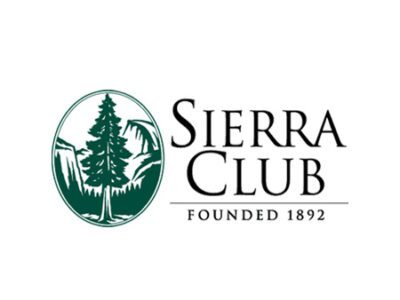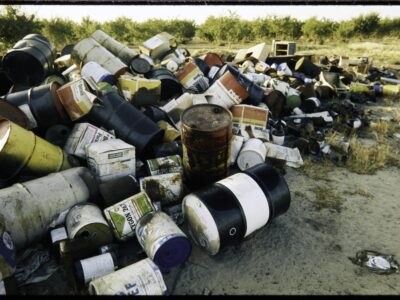More on the Chamber of Commerce’s extraordinary demand for a “Scopes trial” on climate change
UPDATE: regarding the standard of judicial review of any on-the-record hearing (discussed below), see the comments: commenter Steve Taber disagrees with my initial analysis, and he may be right (though I don’t have time to look into it further today).
ORIGINAL POST:
Holly has written a thoughtful post discussing the meritlessness and cynicism of the U.S. Chamber of Commerce’s petition asking that the EPA engage in a hearing “on the record” to determine whether carbon dioxide from automobiles presents an endangerment to public health and/or welfare. (And as a trained scientist as well as a legal scholar, Holly is well-positioned to comment on the ways in which a trial-style adversarial hearing is especially ill-suited to review of science-based policy decisions.) Joe Romm at Climate Progress has also weighed in with rather hard-hitting (and correct) criticism of the Chamber’s tactic. I’ll add a bit of legal background on this. Not only, as Holly points out, is the Chamber asking here for something unnecessary and counterproductive, but it’s also asking for something quite extraordinary, and even bizarre, from a legal point of view.
The process of engaging in a hearing on the record, called “formal rulemaking” in the arcane world of administrative law, stands in contrast to “informal” or “notice and comment” rulemaking, in which an administrative agency publishes a draft rule, receives written comments and reviews scientific data, and is required to consider those comments and data when it publishes its final rule. Notice and comment rulemaking, as the EPA is using in this case, is the standard procedure for virtually all agency rules outside of some very specific contexts in which formal rulemaking has been required, such as the government’s ratemaking procedures in industries such as rail travel, trucking, and telephone service (many of which are now obsolete), in which hearings were thought by Congress to ensure fairness and due process to all stakeholders.
On the other hand, literally tens of thousands of rules about everything from homeland security to management of public lands to – yes, you guessed it – environmental protection have been enacted through the notice and comment process. While I don’t know the exact numbers, I would be surprised if more than a handful of EPA rules, if any, have been issued after a hearing on the record, and certainly none involving endangerment findings under the Clean Air Act. (Readers, please let me know if you have specific information about any EPA formal rulemaking proceedings.) This is because in order for a federal agency to have to engage in formal rulemaking, Congress must have expressed, in the statute authorizing the rulemaking, a specific intent to require the agency to do so.
Administrative Procedure Act section 553 describes the general requirements for federal rulemaking, making the default procedure the informal notice-and-comment procedure. According to Administrative Procedure Act section 553(c), “[w]hen rules are required by statute to be made on the record after opportunity for an agency hearing, sections 556 and 557 of this title apply instead of this subsection.” Those sections set forth the procedures that the Chamber is seeking to invoke here.
There aren’t many statutes that require the agency to conduct an on-the-record hearing to develop a rule, and the Clean Air Act certainly isn’t one of them. In picking out this particular rulemaking and demanding an “on the record” hearing, the Chamber is clearly engaging in some political theater; there’s simply no legal basis for asking the agency to engage in this extraordinary proceeding rather the conduct the rulemaking according to the same procedures that have governed all its other Clean Air Act endangerment findings.
Moreover, EPA would be undercutting its own authority by granting this request. Under APA section 706(2)(E), a court might be more likely to substitute its judgment for that of an administrative agency when reviewing on-the-record rulemaking proceedings, compared to review of informal rulemaking proceedings. Agencies are typically given wide latitude to use their judgment in crafting rules, with courts generally empowered to overturn agency action only where the agency’s action is “arbitrary, capricious, an abuse of discretion, or otherwise not in accordance with law.” The idea is that where Congress delegates its authority to administrative agencies, those agencies are presumed to be empowered to exercise lawful authority within the bounds delineated by Congress., and courts defer to agencies’ exercise of that authority.
The rare exception to this, under section 706 of the APA, is – you guessed it! – where an agency conducts a hearing on the record. In those cases, “substantial evidence” must support the agency’s finding. While this may seem like hair-splitting to non-lawyers, it could be important in practical terms. Under the usual “arbitrary and capricious” standard of review, courts generally are reluctant to examine the agency’s evidentiary findings except to determine they are not absurd or without any basis at all. Although the “substantial evidence” standard of review is still deferential to agencies, many courts applying it have seen it as requiring a reviewing court to look more closely into the record and second-guess an agency’s factfinding.
In short, it would be absurd for the EPA to agree to this procedure, from a legal point of view as well as from a practical one. Unfortunately, the way the Chamber has stepped up its rhetoric, the petition is sure to attract followers, charging that EPA has somehow not done its job properly here. But it’s hard to view this as anything other than a tactical stunt, designed to delay and to place the EPA on the defensive.
Reader Comments
11 Replies to “More on the Chamber of Commerce’s extraordinary demand for a “Scopes trial” on climate change”
Comments are closed.







I would have to disagree with with you about the applicability of 5 USC 706(2)(E) to any “on the record” hearing that the EPA may devise. Clean Air Act section 307(d)(1) specifically states that “the provisions of section 553 through 557 and section 706 of Title 5 shall not, except as expressly provided in this subsection, apply to actions to which this subsection applies (my emphasis). Thus, the “substantial evidence” standard of Sec. 706(2)(E) cannot apply to rulemaking under the Clean Air Act.
smtaber,
Thanks for the comment. I hadn’t thought of that, and you may be correct. Additionally, I believe that Administrator Jackson has taken the position that Section 307 would forbid EPA from even conducting an on-the-record hearing here.
Another update: It turns out that EPA Administrator Lisa Jackson has stated that section 307 ( http://www.law.cornell.edu/uscode/html/uscode42/usc_sec_42_00007607—-000-.html ) would legally preclude EPA from engaging in the type of on-the-record rulemaking that the Chamber of Commerce seeks. (Section 307(d)(1) says “The provisions of section 553 through 557 and section 706 of title 5 shall not, except as expressly provided in this subsection, apply to actions to which this subsection applies,” and 307(d)(1)(k) makes clear that that subsection applies to “promulgation or revision of regulations under section 7521 of this title [relating to motor vehicle emissions],” which includes this proceeding.)
The response to Administrator Jackson’s position is, as I understand it, from the U.S. Chamber of Commerce, that the EPA should follow the guidelines set out by the Administrative Conference of the United States. The ACUS recommended that “additional procedural protection be afforded” (i.e., “on the record hearing”) when (1) scientific or technical issues are “complex;” (2) the problem posed is so “open-ended” that the agency would benefit from diverse views; and (3) the costs errors may pose are “signficant.” 1 CFR 305.76-3(1) (1993).
Granted, there remain several critical questions to this approach, not the least of which is the issue you raise in your blog – whether upon appeal the “substantial evidence” standard or the “arbitrary and capricious” standard would be used. But also there is are questions regarding the weight to be attributed to the ACUS’s recommendations, since, for example, it has not been provided with any funding since its reinstatement in 2004. Another question not yet answered is whether using the ACUS’ recommendations would allow the EPA to move beyond the rulemaking framework provided in the Clean Air Act.
Steve, that’s a helpful citation. The ACUS recommendation you reference is available at http://www.law.fsu.edu/library/admin/acus/305763.html.
It doesn’t seem to me at all to support what the Chamber is asking for here. The recommendations are, by their own terms, not binding. Administrative conference recommendations can’t supersede contradictory Congressional enactments, to the extent they actually conflict. But perhaps most importantly, the recommendations are all framed as potential additional procedures *within* the context of notice-and-comment rulemaking, and do not suggest substituting formal rulemaking for notice-and-comment procedures.
As the ACUS document says: “Agencies should afford interested persons the opportunity to participate as effectively as possible in notice-and-comment rulemaking proceedings. Therefore, in order to enlarge the opportunity for public participation and increase its effectiveness, agencies in appropriate circumstances should utilize procedures such as the following .. . .”
It’s possible that the EPA could voluntarily adopt some of these recommendations in this context (though I haven’t thought through whether it might be legally precluded from enhancing the notice and comment procedures, based on the Clean Air Act’s language – one of the unanswered questions you pose above). Regardless, the Chamber’s position, as stated in its petition, is that EPA is *required* to engage in formal rulemaking here. That can’t be correct.
I think this is a great idea, IF it were done under UK law with “loser pays”. Maybe we could get that British judge that did the AIT lawsuit over there, fly a lot of scientists from around the world to the UK to testify, etc.
(Yes, I know this will not happen).
Going slightly beyond what Sean said, even a mandatory CFR requirement can’t trump a statutory prohibition.
I’ll also repeat what I’ve said elsewhere, that given all the environmental businesses in the country, someone needs to start a project to shake Chamber out of its neandertal environmental positions and into something that more closely reflects the broader business community. I’d love to be involved in that.
It’s a shame how meritlessness and cynicism in all walks of life are easily applied to us. The Chamber’s tactic is one more example!